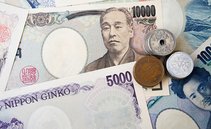How does carry trade work? This particular Forex trading technique is based on the difference between interest rates and the trend in exchange rates.

What is carry trade? How does this speculative practice work in Forex trading which allows you to earn on the differential between interest rates and the price of currency pairs?
Carry trade is a particular trading technique that looks at the differential between the interest rates of two countries as the source of one’s profit.
Widespread in the pre-crisis period, carry trade consists of borrowing in low-interest rate instruments or currencies to invest in high-interest currencies or instruments, thus pocketing the spread between interest rates.
The functioning of this particular trading strategy therefore depends on the Forex and the exchange rate present between the chosen currencies which can change and therefore affect, positively or negatively, our earnings in time.
The preferred currency for carry trades has been the Japanese Yen for years as rates in Japan have been close to zero for many years.
This technique allows us to broaden the profit prospects on the difference between interest rates thanks to the use of leverage, which allows us to operate with sums greater than our availability.
Let’s now see in detail what the carry trade is and how it works, what the profit prospects are, and the risks associated with this particular trading technique.
What is carry trade
When using the carry trade strategy, an investor borrows a currency with a low interest rate and uses it to purchase another currency with a higher interest rate.
The profit margins are therefore directly proportional to the difference between the interest rates chosen, the real source of profit in the hands of the trader.
Furthermore, through the use of leverage, it will be possible to expand profit margins, which would otherwise remain limited to a few percentage units.
leggi anche
Forex: best currencies to invest in 2024

How does carry trade work
The first step is to identify a currency that has minimum interest rates, as close to zero as possible.
At that point we will borrow a certain amount of that currency, the holding of which will have a very low cost for us, corresponding precisely to its interest rate.
With the money thus obtained you will invest in another currency which, in this case, must have the highest interest rate possible.
Once the second currency has been chosen, an exchange will be made between the two, thus being able to aim for the purchase of instruments that offer a return and are negotiable with the second currency.
It is usual to choose investment solutions that are the safest possible, such as government bonds.
It is important to underline that the choice of the two currencies, or the respective interest rates, should be made not only based on the absolute value of the rates but also by looking at the variation trend held by the central banks of the respective areas.
A monetary policy proceeding with a continuous reduction in interest rates indicates that the choice of the currency of that area is an excellent solution given the time perspective of the investment, oriented towards the medium/long term.
At this point the return that will be obtained will be exactly equal to the difference between the interest rates of the two currencies, i.e. the cost of the first compared to the return of the second, net of the risk linked to the exchange rate.
Carry trade: exchange rate risk
The carry trade sees an element of strong risk in the trend of the exchange rate.
The risk, in this case, is to be understood as neutral: it can lead, in the same way, to additional gains or losses.
Between when you make your first currency exchange and when you close your investment and have to exchange your money back into the original currency, you are inevitably subject to the exchange rate.
The exchange rate varies over time and its variation could have a greater weight than the interest rate differential.
An appreciation or depreciation of the exchange rate during the investment period may therefore lead to a loss or gain, depending on the currency held.
Let us now summarize all these aspects in the following practical example.
Carry trade: practical example
Let’s take for example the US dollar and the yen as currencies, their cross dollar-yen as the exchange rate and 2005 as the period.
From January to December of that year, the differential between the interest rates of the two areas remained on average at 3.25%, with Japan leaving interest rates close to zero for decades.
This means that a carry trade carried out in this period would have led to a gain of +3.25% on the invested capital. Using a leverage of 1:10 the gain would have reached more than 32%.
The dollar-yen exchange rate in the same period followed the following trend:

From the beginning to the end of the year it appreciated by +19%.
An appreciation of the dollar-yen exchange rate brings advantages to holders of dollars, namely in our case.
The total earnings accrued, therefore, will see a further increase of +19% reaching +22.25%. If the 1:10 leverage was used, a total gain of +220% would be achieved.
It is important to underline how the significant variation experienced by the dollar-yen exchange rate could, in the same way, become disadvantageous and transform into an equally important loss.
This highlights the large risks associated with the exchange rate.
It is necessary to find currency pairings whose exchange rate is as stable as possible and always keep an eye on its trend on Forex, to always have control over where the carry trade technique can lead us.
leggi anche
Does automated trading really work?

The carry trade in spot Forex
Using currencies as a carry trade tool can be a really good deal thanks to 2 fundamental components:
- the existence of large spreads on rates between some currencies,
- the high financial leverage available.
Let’s say we buy Australian dollars (4.75% interest) against American dollars (0.25% interest) with a capital of $1,000 and leverage of 1:100. In this case with $1,000 we control a $100,000 capital, on which we receive an annual interest of 4.5%, or $4,500 per year, 450% of our capital.
The risks of the carry trade
From what has been said so far, the carry trade would seem to be the solution to all personal financial problems... in reality, this is not the case, as like all profitable forms of investment there are risks of losing money.
Specifically, the long position opened on the AUD/USD, if the Australian dollar depreciates against the US dollar, could lose more than it earns in terms of interest, making the entire operation unprofitable.
In this sense it must be said that the carry trade in some way feeds itself: if the spread between the AUD and USD rates remains or widens there will be more and more subjects who will use these currencies for the carry trade, pushing up the AUD and down the USD and generating profits from movement on the markets as well as from the interest rate.
Obviously, from time to time, the bubble bursts, and many subjects are literally wiped out from the market. Even when implementing a carry trade strategy, it’s important to set a stop loss on potential losses while limiting profits accordingly.
Original article published on Money.it Italy 2017-06-29 09:54:00. Original title: Come funziona il Carry Trade?




